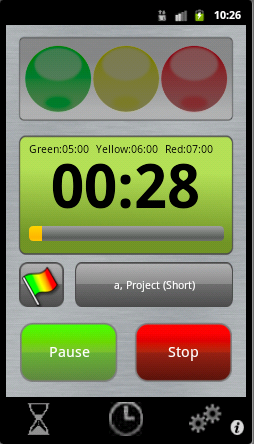

These days, a mobile phone usually serves that purpose. Bonus points if it can be used virtually, too! You’ll give new meaning to the term “green screen.”Ĭhallenge: Create a timing device for your club-as simple or as elaborate as you’d like. And if your meeting is on Zoom, try one of Toastmasters’ Timer Backgrounds, which are translated into 11 languages including English. Colored building blocks or markers, when held close to the webcam, also work well. Post-It Notes don’t come in grass green, banana yellow, and apple red, but they do come in fluorescent lime, high-vis yellow, and neon pink. Virtual meetings have inspired even more creative timing signals, including objects around the house. If you’re looking for something glitzier, an internet search will reveal a world of possibilities: traditional tabletop stoplights non-traditional tri-color light boards customizable colored bulbs controlled by app or remote control … The list goes on. You could label the cards with the name of the color or use large black letters, “G, Y, and R.”)Īrmed with your toolkit, you are their greatest ally in their race against the clock. ( Editor’s note: Some members or guests may have a form of color blindness, which means they have difficulty distinguishing the standard green, yellow, and red timer cards. Some clubs have literal flags, made from painted dowels and colored felt, which the timer waves wildly in the air and then displays in a wooden stand. The simplest option is a set of colored cardboard cards, like the Toastmasters Timing Cards. There are more than 16,000 Toastmasters clubs in the world, and nearly that many types of timing signals.

Green, yellow, and red come in many forms. just make sure to stay within your own time limit! How long did the Club President spend making announcements? How long did it take for the applause to die down after each speech? Add some levity and spice to your timer’s report. Depending on your club’s particular structure or what the Toastmaster might request, you monitor one-minute evaluation silences between speeches, ensure timely transitions between meeting segments, and watch the clock to make sure the Toastmaster brings members together promptly after the break.Ĭhallenge: Time everybody-and everything.

You’ll also use the agenda to help the Toastmaster of the meeting keep the session on track. Review the time requirements for each prepared speech in general, the timing indicator goes on at the five-, six-, and seven-minute mark, but Ice Breakers and advanced Pathways projects have different time limits. It would also be helpful to have the timer script and log. When serving as timer, you’ll need a detailed agenda of the meeting. To be effective, a timer-like a plumber or a repair tech-needs the right toolkit: an agenda, a signal, and a clock. Even if you’ve served as timer several times, challenge yourself to take it to the next level. The role is straightforward, which is a great way for new members to get involved. The timer of the meeting monitors each participant, indicates when they are nearing the end of their allotted time, and, at the end of the meeting, reports the length of each prepared speech, Table Topics® response, and evaluation. Like a plumber or an appliance repair technician, the job is often underappreciated-until you realize that your quality of life, or the quality of your Toastmasters meeting, would decrease rapidly in its absence. The timer is a simple but essential meeting role.


 0 kommentar(er)
0 kommentar(er)
